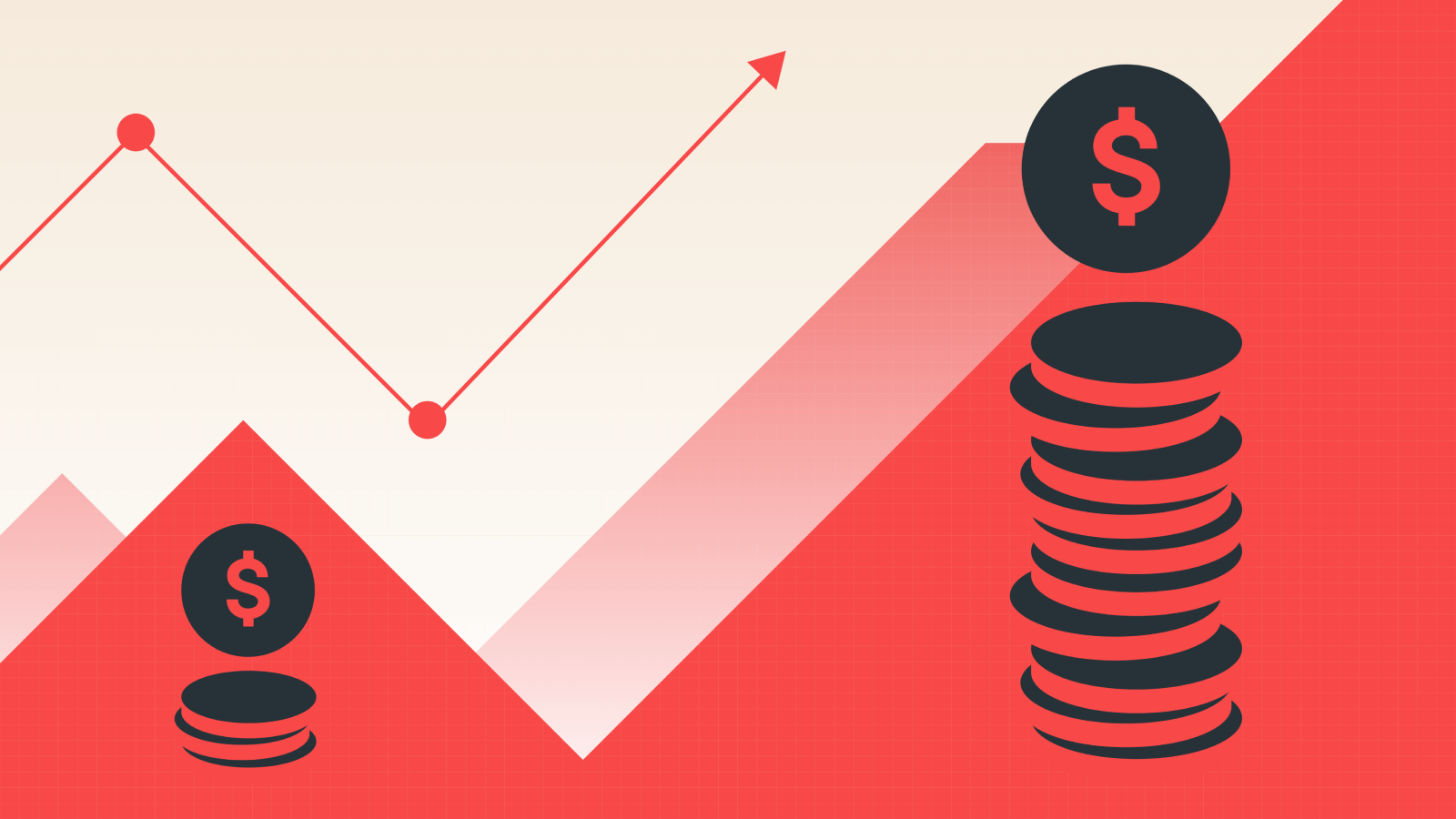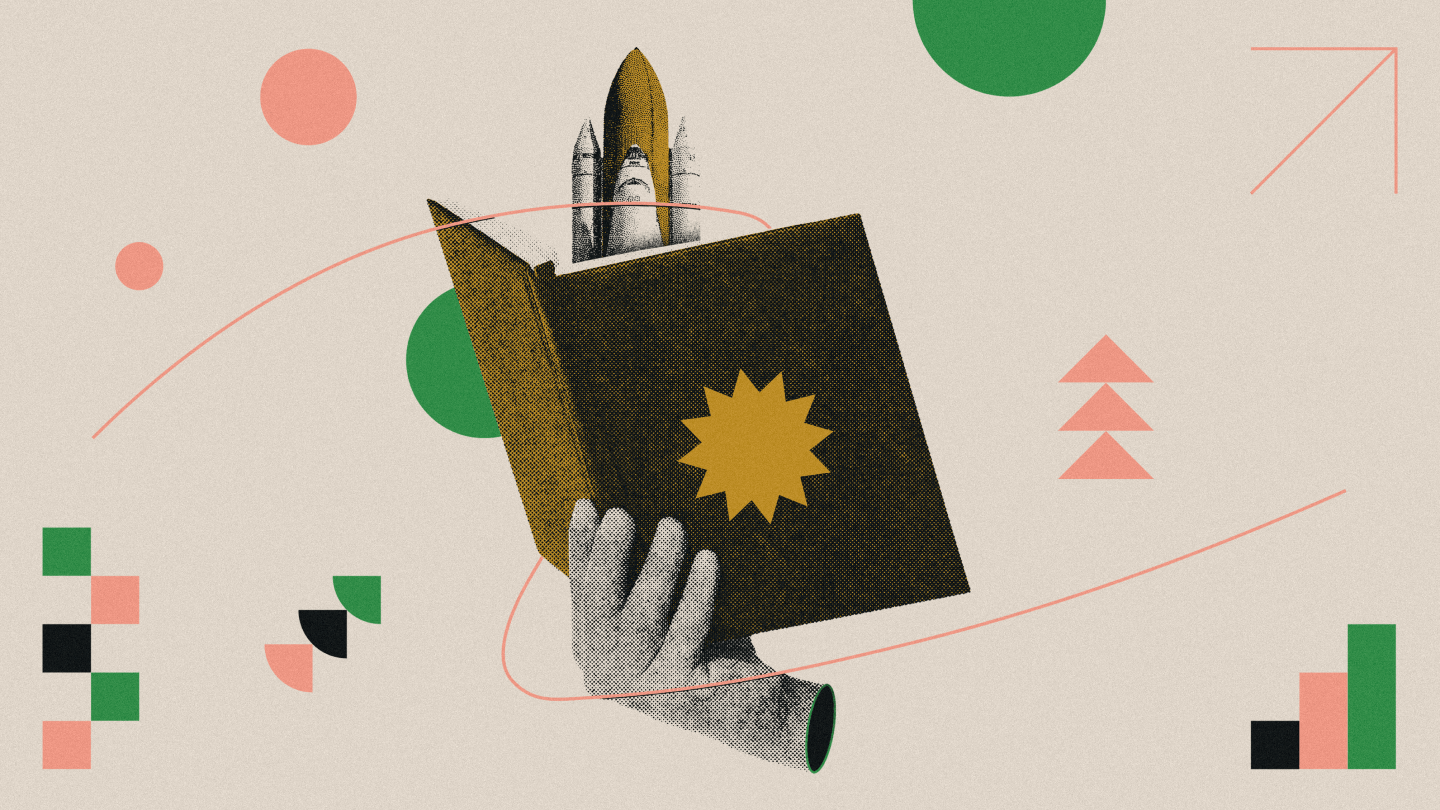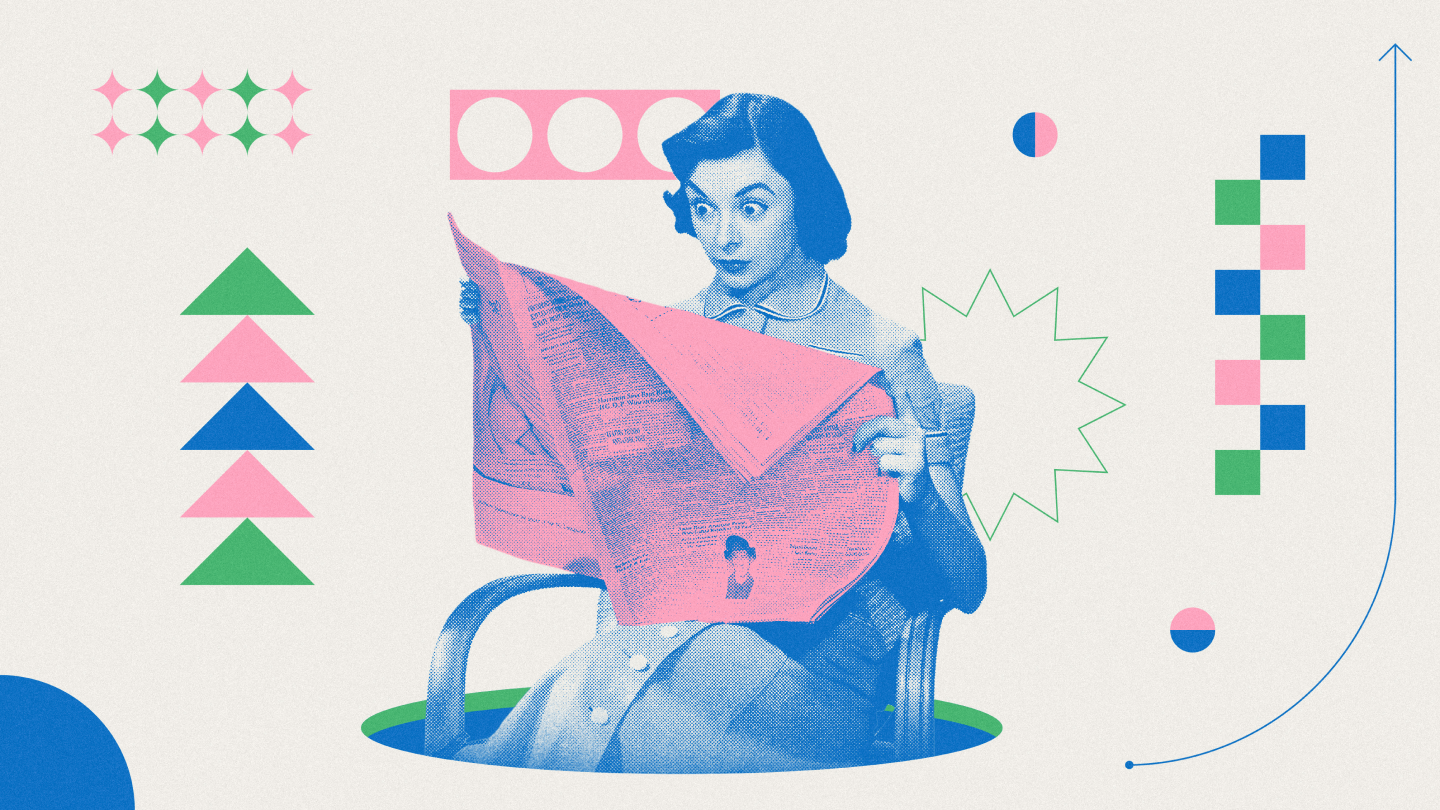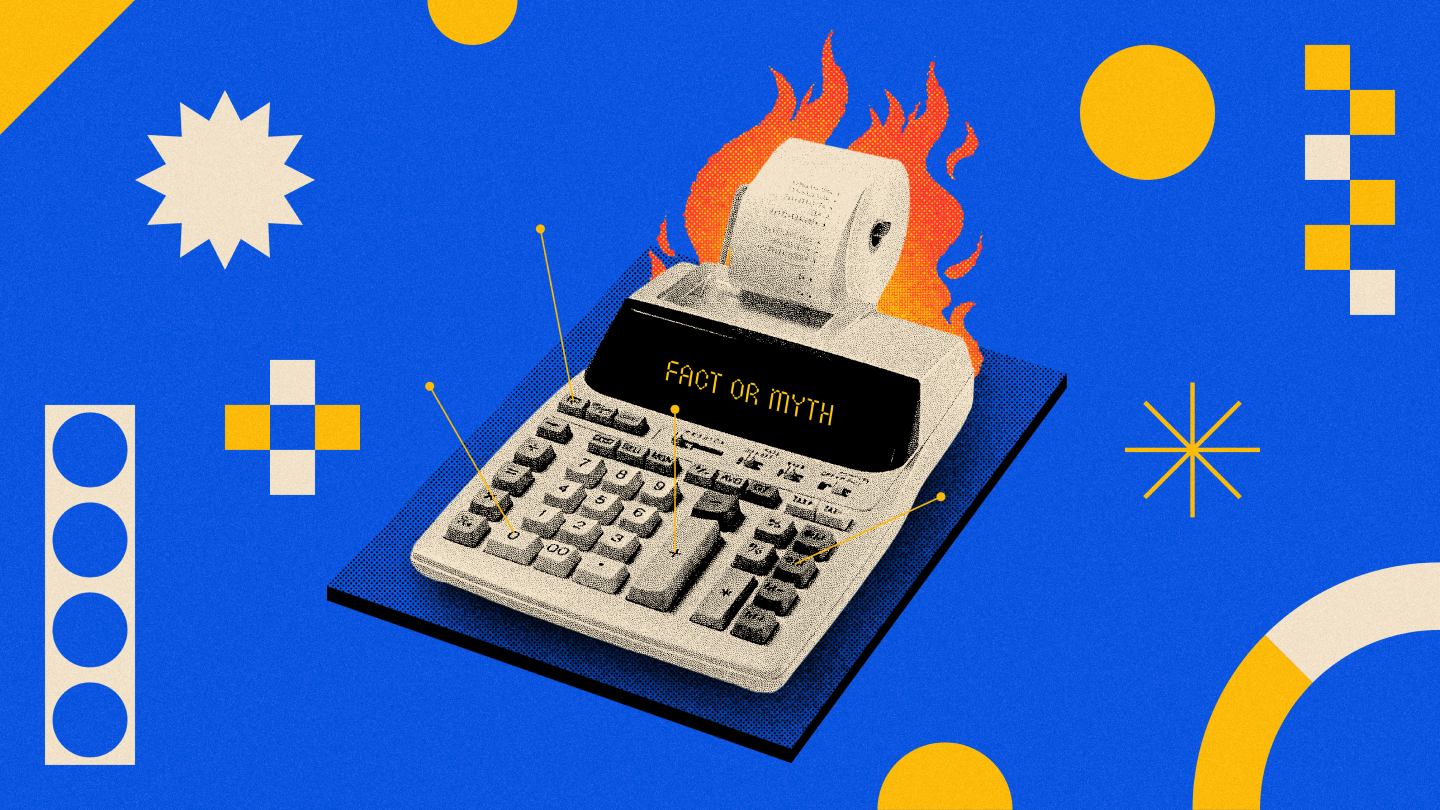Do you find yourself doing a double take when you go to buy one of your regular items and find its price has increased? Maybe it’s your morning coffee, your favourite lunch spot, or pet food. It seems regardless of the category, everything is costing more than usual lately. The word “inflation” has been everywhere in 2022 and has a bit of an ominous aura attached to it. We are here to shed some light on inflation, hopefully providing you with a sense of optimism. Keep reading to learn the fundamentals of inflation, what to expect, and some tips on dealing with it.
Back to the basics
Let's travel back in time to 1935 when 1 kg of coffee cost you a mere $0.85. Today, buying 1 kg of coffee can run you $20. When you add milk and sugar to the equation, the price of a simple double double has increased by over 1400%. Inflation is behind this increase and it means that things become more expensive over time.
While the price of goods and services will increase over time, so will Canadians’ income. The balance between how much money we have and how much we need to spend is called purchasing power. If the price of coffee was still $0.85 with today's wages, then Canadians would have high purchasing power; actually extremely high. When you notice your money’s value is changing, it means there is a change in purchasing power and can be an indication of inflation.
How is inflation measured?
Thankfully, inflation is not solely measured by the price of a double double. Even though we do enjoy massive amounts of coffee, (did you know the average Canadian consumes 152.1 litres a year?) we have to take a more holistic view of our purchasing habits to truly understand inflation.
Economists calculate inflation using a curated basket of fixed goods and services that are essential to the average Canadian. You can find these calculations on Statistics Canada, and there are items like food, shelter, furniture, healthcare, and of course, gas and energy.
This basket of goods is called the Consumer Price Index (CPI), and it is the most useful instrument economists have to measure inflation. The CPI is designed to gauge and measure the average price differences year over year.
How is inflation calculated?
Math and economics may not be your favourite thing to read about, but we are going to simply lay out how bright economists calculate Canada's CPI. We have mentioned some of the elements in the fixed basket, but the brains behind CPI have more strategy when developing it than just throwing random things in a cart like a 6-year-old.
Think about your budget—how much money you spend on groceries versus housing each month will not be equal. A 10% increase in grocery prices would have a lesser impact on your wallet than a 10% increase in housing prices. This is why there is a weighted factor matrix in the CPI, which looks at Canadian consumer spending data to determine which category’s price fluctuations have the most impact.
Not so surprisingly, the heaviest weighted category on the CPI is shelter (rent and housing), which has a weight of 29.78% on the CPI.
To measure changes, there needs to be a baseline established first. The baseline for the CPI is 100 ( the year to base this off was 2002). The level above 100 helps us to calculate inflation, and if it ends up below 100 it would be calculating deflation.
Let’s look at an example.
Here we will calculate the inflation rate between May 2021 and May 2022. First we look at the CPI for each of those months:
CPI May 2021 = 141.0
CPI May 2022 = 151.9
To calculate the inflation rate over that 12-month period, you’d use the following formula.
Inflation in % = ((151.9 - 141.0) / 141.0) * 100 = 7.73%
Based on this, between May, 2021 and May, 2022 Canadians had to pay an average of 7.73% more for the same goods and services. Keep in mind that inflation is normal, but usually at a much slower pace of ~2% per year. So how is inflation 3x (almost 4x) higher than that?
What causes inflation?
What causes all of this? What’s the reason your double double doesn't cost a quarter anymore? Inflation can be the result of many factors. Over the course of history we have seen war, natural disasters, and other events have a direct impact on inflation. The easiest way to explain these causations is to break them into three parts: demand pull, cost push, and money supply.
Demand Pull Inflation
Demand Pull inflation is a rise in prices as a result of when the demand for a product increases beyond what production is able to keep up with (i.e. supply and demand). When demand exceeds supply, companies have greater pricing power and will often raise prices in an attempt to maximize profit.
An easy way to remember this is that consumer’s demand pulls the prices up.
If you’ve ever been outside a sports or music venue on the night of a big event, you might have seen people selling tickets well above face value. They know that supply is low and demand is high, which lets them drive the price up.
Cost Push Inflation:
Cost Push inflation is when the production costs for a product rise, so the seller is forced to increase prices to maintain their profit margins. If it becomes more expensive to make the product or deliver the service, then it will be more expensive to sell it.
An example of this is when companies push the cost onto the consumer.
So let’s say that gas prices surged due to geopolitical factors across the world that impacted supply and demand. At the same time, travel became increasingly popular to consumers after significant travel restrictions were lifted after a couple of years. We see the impact of both demand pull and cost push inflation drive the prices for flights up.
If a company is not wanting to increase their prices, they might look at other ways to reduce their costs to maintain their margins. A prime example of this would be shrinkflation. This term is used to describe when items shrink in quantity, or size, while maintaining the same price. You know that feeling of growing up and feeling like everything around you got smaller, but in reality you just got bigger? This is a similar concept, though in the case of shrinkflation, things really are getting smaller.
A few examples of shrinkflation you might recognize are:
- Powerade (Was: 32 oz.; Now: 28 oz.)
- Lay’s Potato Chips, party bag (Was: 15.25 oz.; Now: 13 oz.)
- Nutella (Was: 14.1 oz.; Now: 12.3 oz.)
Money Supply
Another significant factor that contributes to inflation is money supply. Inflation occurs when the money supply increases faster than the economic output—this is called inflationary pressure. What affects money supply, you ask? Changes in money supply occur when a government prints more money, which is usually a coordinated effort between the federal government and the nation's central bank. During the pandemic, many consumers and small businesses received government relief in the form of relief cheques, loan deferrals, and other programs. All of that money has to come from somewhere.
Price stability is threatened when money is getting pushed into the economy at a faster rate than the economy is growing. This relates back to supply and demand—when significant sums of money enter the economy rapidly, it lowers the value of the money and drives prices up.
To combat inflation, the Bank of Canada (BOC) will need to be more restrictive in their monetary policy. This means raising interest rates as well as reducing the money supply. Higher interest rates make borrowing more expensive, and subsequently reduces consumer demand and spending, which in turn helps cool prices. Reduction in the money supply is done through the Bank of Canada cutting their purchases and holdings of Government of Canada bonds.
While both of these measures do help reduce the pressures of inflation, they also restrict economic growth, risk increasing unemployment rates, and may even put our economy into a recession. It’s important to understand here that the primary role of nearly all central banks around the world is to help maintain price stability. You can’t have sustainable long-term economic growth without having price stability first.
Interest rates. How do they help with inflation?
If you’re coming of age right now, you might be starting to sweat and feel your heart rate increase every time you get groceries, fill up for gas, or turn on the news. But not to worry, this isn’t the first time we’ve experienced rising inflation and it won’t be the last.
If you know anyone who reached financial independence in the 80s, they might share stories about rising interest rates that were used to combat inflation. Inflation is normal, and while interest rates will rise in response, they’ll also come back down.
It’s frustrating watching your $100 of groceries end up in fewer bags with fewer items. We’re going to assure you now that inflation spikes don’t last forever, and history shows that it eventually levels out. The most effective strategy in managing rising inflation is by increasing interest rates, and that's in the hands of central banks—like the Bank of Canada. How does the BOC deal with these cycles to help relieve financial pressure for Canadians?
The Bank of Canada's interest rate hikes combats inflation in three steps. The BOC monitors for changes in the core CPI (released monthly), when the rate of inflation starts to materially drift above their 2% long-term target, the BOC will start to increase interest rates. The increase in interest rates makes it more expensive for both consumers and businesses to spend money (especially on big purchases you would take on debt for). This lowers demand, and therefore lowers price pressures.
Something that the BOC did during the pandemic-fueled recession that they’ve never done before was quantitative easing, which is effectively printing money. Not only has this program now ended, the BOC is even allowing their balance sheet to shrink. All of this goes to reducing the money supply. As inflation decreases, the BOC will (at some point) decide it’s no longer necessary to have restrictive monetary policy. If economic growth indeed starts to stall, or even fall, we may even see falling interest rates in the medium future.
Recovering from inflation doesn’t always mean lower prices. Prices could remain the same, and even continue to rise, just at a much slower rate than before. When we do see prices lower, it can be a sign of deflation and an indicator of increased purchase power for consumers, economic downtown, and even a recession. Any of these options don’t happen overnight; it takes time to cycle through the market.
We’d love to give you a historical average of how long it takes (trust us, we tried), but the reality is that each situation is different with varying outcomes and factors. From what we could find, you can expect it to take at least a couple (or few) years to recover. In the meantime, there’s ways of coping with inflation. We’ll share our top three right now.
Calculate your personal inflation rate
Like we talked about before, inflation impacts different categories of spending differently. So if milk prices go up 20%, but you don’t drink milk, then that particular instance of inflation doesn’t impact you. Though the CPI is a bit more granular, you can still calculate what your personal inflation rate is.
Statistics Canada released a personal inflation calculator where you can select the province or territory you live in and plug in some numbers from your monthly or annual spending. The numbers will shift the graph and chart and you’ll be able to see both the 12-month and 1-month percentage change.
After you have your personal inflation rate, you can start playing around with the numbers. If you start reducing spending in certain areas, how low can you get that inflation rate?
Mitigate lifestyle inflation
Lifestyle inflation, or lifestyle creep, is when your cost of living increases due to a change in spending patterns. This typically happens around times of an income increase, like graduating school and working full time, a raise or promotion, etc. Things that used to be seen as once-in-a-while treats turn into everyday essentials.
Falling into lifestyle inflation makes it harder to save, build wealth, and cope with inflation. Let’s say you receive a 10% raise, and as a result you increase your monthly expenses by 10%, that might feel fine until inflation turns that 10% increase into a 17% increase. Whereas if you maintain the same spending habits prior to the raise, then you won’t experience the same kind of pressure during inflation spikes. Sure, you’re maybe saving less, but you’re also not starting to sweat wondering how you can increase your income to maintain your lifestyle.
An easy way to avoid this is to track your spending and watch for trends that might indicate lifestyle inflation.
Invest. Invest. Invest.
In periods of rising inflation, investments that typically do well include stocks, commodities, and real estate. Bonds, on the other hand, usually perform poorly (unless they’re inflation-linked bonds). But we can’t just look at inflation on its own. Remember earlier we said that in periods of rising inflation, central banks often need to raise interest rates to cool price pressures? Well, rising interest rates also happen to affect the price of financial assets, by quite a lot actually, and usually in a negative fashion. And when you combine high inflation with sharply rising interest rates… well, you get 2022 to-date.
Yes, this year so far has not been good for most investors. In fact, we haven’t seen the stock market perform this badly since the 2008 Great Financial Crisis. Historically, periods of abnormally high inflation are usually accompanied by greater market volatility. It’s understandable: there’s a chance that either inflation runs out of control for some time, or central banks are too aggressive in trying to tame inflation that they cause a recession. Neither scenario is good for the economy in the short-term, and it may be hard for investors to stay optimistic.
During these periods of uncertainty, many people pull back their investments. When markets see big declines, it may feel like you’re just throwing money away—which is actually the opposite of what you want to do. Historically, these are the best times to put your money into the market. Think of it like buying stocks on a discount (the whole stock market is on sale!), and while the market does see short-term declines from time to time, it also tends to trend upwards over the long-term. You can’t have a bull market without having a bear market first. Patient investors are usually rewarded.
It’s also a good time to ask for a raise, find ways to increase your income, and update your resume! You can also look into finding ways to make your home more energy efficient.
Everything will be okay
Take a deep breath. Remember that while this time might be a bit more stressful than others, it’s going to be okay. Knowledge is power, so keep educating yourself like you are now. If you’re still feeling anxious, you can sit down with a financial advisor and chat through all your concerns and options.



